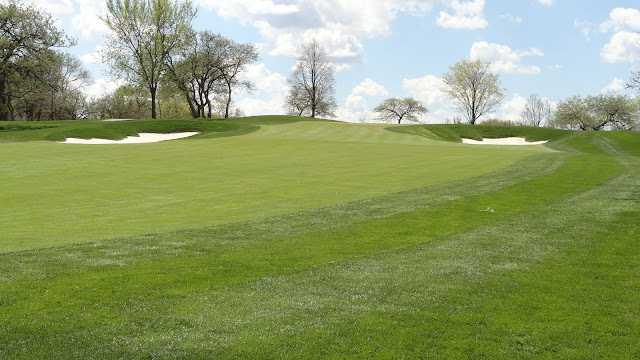The summer flowers have arrived and most of them have found a place in the beds around the clubhouse and entrance. This is usually a process that takes a few days to finish. The flowers that were in place this spring are available for you to take if you choose. They are underneath the pine trees near the parking lot.
The crew hard at work planting flowers.
Disease symptoms resulting from fungicide pathogens were noticed on Sunday, and so, we have applied our first fungicide application on the course. The picture on the left is the disease dollar spot and was taken on Sunday in a patch of bentgrass in the rough. We monitor the course for disease symptoms when weather conditions favor disease, but we also will be on a regular fungicide program through the summer. We make these applications on the club's closed day, usually Monday. (Tuesday this week because of the holiday) If you have any questions about what we apply to the course, please contact us.
Here is a picture I capture on Memorial Day morning. I thought it was appropriate.
The crew hard at work planting flowers.
Disease symptoms resulting from fungicide pathogens were noticed on Sunday, and so, we have applied our first fungicide application on the course. The picture on the left is the disease dollar spot and was taken on Sunday in a patch of bentgrass in the rough. We monitor the course for disease symptoms when weather conditions favor disease, but we also will be on a regular fungicide program through the summer. We make these applications on the club's closed day, usually Monday. (Tuesday this week because of the holiday) If you have any questions about what we apply to the course, please contact us.
Here is a picture I capture on Memorial Day morning. I thought it was appropriate.












































